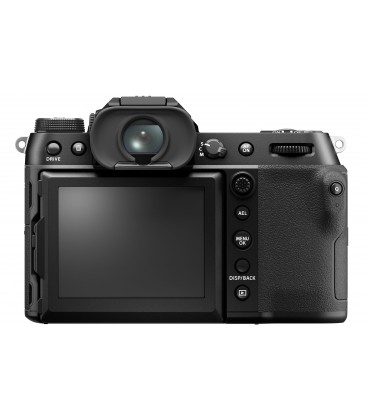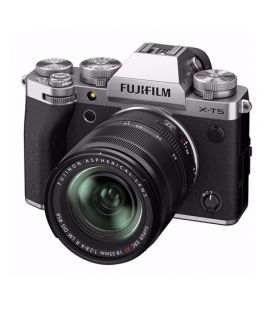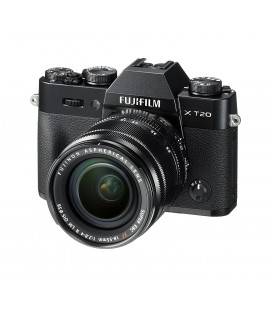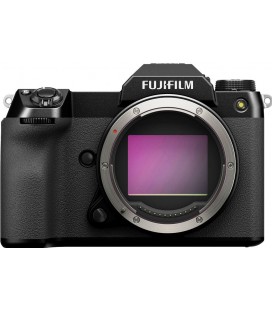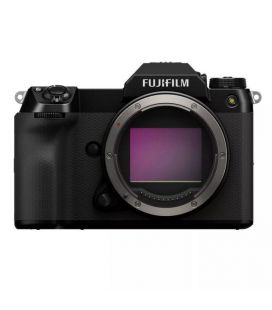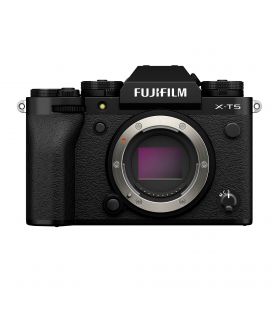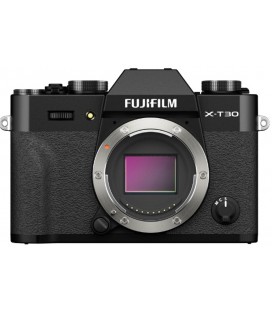FUJIFILM GFX 100S Medium Format Mirrorless Camera
Redefining the medium format, the FUJIFILM GFX 100S combines an ultra-high resolution 102MP sensor with an impressively compact and portable mirrorless camera body design. This camera, which is also attractive for photo and video needs, is completed with a durable construction, in-body image stabilization, and proper autofocus to make the camera more accessible and applicable for a variety of shooting needs. .
At the heart of the GFX 100S platform is the 102MP 44 x 33mm BSI CMOS sensor, offering the ultra-high resolution coveted by stills photographers, as well as impressive 4K video recording options. The sensor is paired with the X-Processor 4 to generate 16-bit raw images with wide dynamic range, low noise levels and sensitivity to ISO 12800, and the sensor's BSI design contributes to high clarity and accurate reproduction of the colour. when working in a variety of lighting conditions. In terms of video, DCI and UHD 4K video recording is possible at 4: 2: 0 10-bit internally, 4: 2: 2 10-bit via HDMI, or 12-bit raw if recorded externally, and an F-log gamut Settings can also be used for more advanced color grading during post-production. Beyond high resolution shooting,
Balancing the impressive sensor design is a remarkably compact form factor, opening up a range of new work scenarios for this high-resolution platform. Sleek and lightweight, the GFX 100S 'portability is backed by capable in-body image stabilization that compensates for up to 6 stops of camera shake to improve handheld shooting. In contrast, this stabilization system also allows you to create 400MP files using the Pixel Shift Multi-Shot mode to obtain extreme details from still subjects. Also contributing to the sleek form factor is a fixed 3.69m-dot EVF for brilliant viewing at eye level and a rear 3.2 "touchscreen LCD with a three-way tilt design.
102MP BSI CMOS Sensor and Processor X 4
Utilizing a large and extremely tall 102MP 43.8 x 32.9mm resolution BSI CMOS sensor and X-Processor 4, the GFX 100S is capable of delivering 16-bit still images with a wide dynamic range, as well as a wide ISO sensitivity range. 100-12800, which can be expanded to ISO 50-102400. The large size of each pixel allows for more efficient light gathering, as well, for smoother color and tonal transitions to produce a characteristic three-dimensional "medium format look". In addition to the 4: 3 standard, a variety of traditional medium and large format aspect ratios can be used, including 1: 1, 65:24, 5: 4, 7: 6, 3: 2, and 16: 9.
The image processor and sensor also give the system a versatile edge, allowing continuous shooting at up to 5fps or for recording DCI and UHD 4K30 video.
UHD and DCI 4K video recording
Utilizing the large sensor size for more than just still images, the GFX 100S also offers an attractive range of video capabilities, including internal 4K30p up to 4: 2: 0 10-bit DCI and UHD video recording, as well as 4K30p 4. : 2: 2 10-bit via HDMI output, both up to 400 Mb / s, as simultaneous external and internal recording is possible. If you're working with an Atomos Ninja V, then 12-bit raw 4K30p UHD output is also possible using Apple ProRes RAW format.
The speed of the quad-CPU X-Processor 4 greatly benefits overall video performance, enabling fast read speeds when recording 4K video, helping to reduce rolling shutter distortion when filming moving subjects.
In addition to the supported 10-bit color depth, the GFX 100 also includes the F-Log gamma setting, which provides a flat image for use in advanced color grading software during editing. This maximizes the potential dynamic range in difficult scenes and image adjustments can also be made to enhance hue, shadow tone, color, and sharpness. HLG recording is also compatible with HDR applications, and F-Log, HLG, and Film Simulations can be used simultaneously with external raw output.
Additionally, the camera features a 3.5mm microphone jack and 3.5mm headphone jack for more advanced audio solutions.
Image stabilization by sensor change
Built-in 5-axis sensor shift image stabilization helps minimize the appearance of camera shake to better accommodate manual shooting.
Read moreShow less






